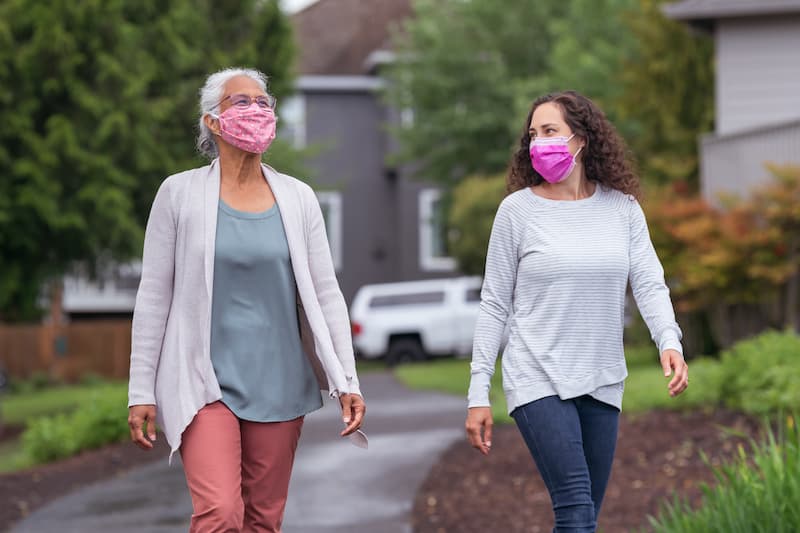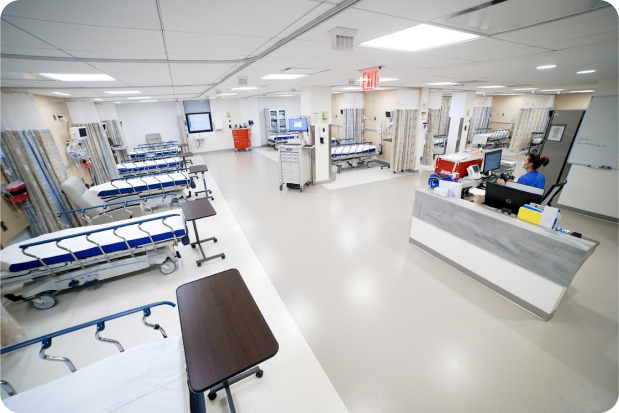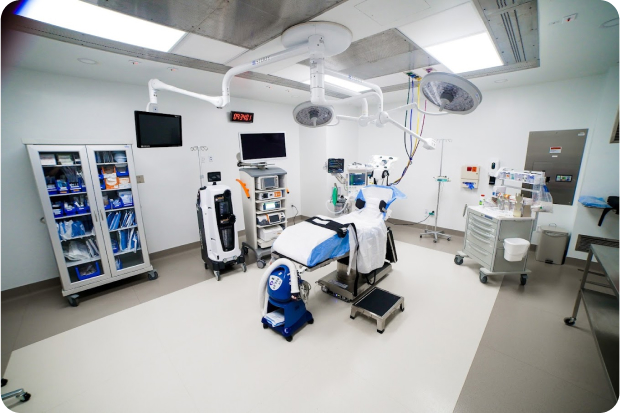 OUR LOCATIONSCall to book (212) 604-1300
OUR LOCATIONSCall to book (212) 604-1300
 OUR LOCATIONSCall to book (212) 604-1300
OUR LOCATIONSCall to book (212) 604-1300

Since the COVID 19 pandemic started, the number of people suffering from back pain has significantly increased. And although back pain isn’t necessarily a COVID symptom, it’s still a problem you need to address right away. Even with a COVID 19 vaccine, back pain issues related to COVID 19 infection can still create problems in your life.
So is there something you can do to minimize upper back pain COVID issues? As you’ll see below, not only can you reduce back pain while at home, but you can also go for treatment options available in case your problem is worse than expected.
You first need to understand how the pandemic can cause or worsen a person’s upper back pain. Basically, there are two ways COVID can do that. Either the upper back pain is a COVID symptom, or it’s a consequence of lifestyle changes you made due to the crisis.
As mentioned above, back pain in itself isn’t necessarily a COVID 19 symptom. But as most positive cases come with general muscle aches, coughs, chest pain, and back pain, you shouldn’t rule out the possibility of a COVID-19 infection. Dry cough, runny nose, fever, numbness, and blood clots are also possible coronavirus symptoms signs.
Upper back pain caused by severe COVID 19 is largely due to the body’s anti-inflammatory response. Unlike body aches due to overexertion, COVID back pain can last days if not weeks. Plus, COVID patients spend their time in bed, which can exacerbate the upper back pain even further.
If you’re currently experiencing muscle pain, shoulder pain, abdominal pain, fevers, respiratory symptoms, and headaches alongside body ache symptoms, then you need to take a COVID virus test right away. Otherwise, a COVID 19 patient may end up with worse problems than upper back pain.
The most common causes of back pain and joint pain include poor posture, lumbar muscle strain, and disc herniations among others. With your daily routine disrupted by coronavirus infection, you’re more likely to experience these mild symptoms.
The number of disc herniation cases has dramatically spiked since the pandemic began. With everyone advised to stay indoors, people have to work from the safety of their homes, so it shouldn’t be surprising that some of them will develop disc herniation along the way.
Additionally, the COVID situation resulted in people engaging less in physical activities. People who used to hit the gym or walk their dogs in the park won’t be able to do those things until the pandemic ends. This lack of movement will gradually take its toll on your muscles, weakening them slowly before eventually leading to upper back pain.
Despite the current crisis, the conditions and symptoms that can lead to upper back pain remained unchanged. These include the following:
Muscles can be conditioned depending on how you use them. Needless to say that using them improperly will lead to bad body posture and eventually upper back pain. Take the way you sit behind your desk for example. Slouching in your chair will cause your muscles to grow weaker. It will also add pressure to your spine, neck, ligaments, and discs. Over time, these will lead to upper back pain and other complications.
Overusing your back muscles can lead to upper back pain as well. This usually happens after doing certain physical activities again and again. A classic example of this is pitching in baseball. Doing a similar motion while pitching will eventually take a toll on the player’s shoulder. In any case, repetitive motions will gradually irritate and strain your muscles. If left unchecked, it will lead to chronic upper back pain and other issues.
Patients who experience traumatic injuries caused by falls from heights, sports collisions, vehicular accidents, and whatnot can also potentially lead to upper back pain. Depending on the injury, your pain may occur immediately or days after the incident. More specifically, injuries to your muscles, nerves, spinal bones, and discs could lead to upper back pain and other permanent complications unless treated straight away.
Herniated discs occur when the soft cushions between your vertebrae slip out and add pressure to your spine. While it commonly happens in the lower back, there are times when it can occur in the upper back. And even the smallest pressure exerted by the bulging disc is enough to cause you great upper back pain and other debilitating persistent symptoms.
If the herniated disc winds up pinching a nerve near your spine, you could end up experiencing more mind-numbing back pain. Additionally, it’ll result in you having problems controlling your bladder and legs. Thankfully, you don’t need surgery to fix this problem (more on this below).
Myofascial pain can stem from any problems in your connective tissues, and it can occur in your back. The pain usually begins shortly after an injury or muscle overuse, and it can last long after you’ve recovered. Myofascial pain comes with trigger points that can be identified by applying pressure to specific spots on your body. Active trigger points usually lie within your skeletal muscles; it’s the spot that can cause upper back pain. Meanwhile, latent trigger points cause muscle weakness and restriction of movements.
Although upper back pain is usually caused by muscle decondition and traumatic injuries, there are times when it’s caused by problems in the bones and cartilages. Osteoarthritis is a good example. As you grow older, the cartilage protecting your bones wears down. Eventually, no cartilage will be left to cushion your bones together, causing them to rub together and resulting in pain and nerve damage.
A spinal epidural abscess can cause upper back pain on rare occasions. This infection occurs when germs and pus start accumulating between your spine bones and spinal cord. The abscess will gradually grow in size, leading to upper back pain in the process.

Upper back pain can interfere with your daily life, so you should not let it go untreated. But to keep yourself from the coronavirus, you should try these home remedies first.
Chances are, your workstation is indirectly responsible for your upper back pain. Sitting in front of your laptop every day makes it easy for you to develop bad muscle habits, which can lead to poor posture and upper back pain. So aside from improving your posture while working, you should consider revamping your home workstation while the pandemic lasts. That means getting back-friendly chairs and other ergonomic accessories.
If you’re looking for something quicker, go for ice packs and hot compress bags. The ice pack helps reduce the feeling of inflammation in your upper back, while the hot compress can help relieve your aching muscles. Keep in mind that this is a temporary fix; you’ll need something more to actually get rid of upper back pain. For best results, don’t apply the ice pack and hot compress bag for more than 20 minutes at a time.
Simultaneously, you can also take pain relievers to ease your upper back pain to an extent. Over-the-counter medications like acetaminophen, aspirins, ibuprofen, or naproxen will do. Like the ice pack and hot compress bag, this is a temporary solution. Nevertheless, it can help get you back up on your feet long enough before you have your upper back pain treated by a professional.
Some exercises can help you relieve not only upper back pain but also neck pain and more. If you want to reduce your back pain while waiting out the pandemic, start a daily exercise program. Start with exercises that will help loosen your tense muscles and release endorphins in your brain. You can also try learning yoga to reduce back pain and stress at the same time.
Believe it or not, the shoes you wear can help reduce or add to your upper back pain. For example, wearing pairs that no longer fit you will strain the muscles on your legs, back, and neck. Meanwhile, high heels can throw off your body alignment, leading to lower and upper back pain. Also, flat footwear can add further strain to your feet and back. So in case you’re heading out to get essentials, you should wear shoes that will snugly fit and support your feet.
According to research, poor sleep quality can negatively affect your pain threshold and chronic pain symptoms. So to relieve your upper back pain, make sure you get all the beauty sleep you need. Most adults need seven to nine hours of sleep daily, although there are variations. If you want to reduce your body aches, sleep on a comfortable mattress. Your pillows need to be supportive enough to keep your neck and back in a straight line.
Waiting out the pandemic at home can be downright stressful. When stress is unchecked, it can worsen your back’s painful spasms and muscle tension. So until the coronavirus crisis blows over, do whatever you can to manage or reduce your stress levels. Try techniques like mindful meditation, deep breathing, muscle relaxation techniques, and yoga among others.
While the home remedies listed above can greatly relieve your upper back pain, they won’t help you treat its cause. For that, you need proper treatment such as the ones listed below:
Going to physical therapy helps you address what’s causing your upper back pain, as well as minimize or avoid it in the future. Now there are two kinds of physical therapies for upper back pains: passive and active. Passive treatments involve deep tissue massages, ultrasound, and hot and cold therapies. Meanwhile, active treatments involve exercises that can improve your flexibility, strength, and more. Depending on your case, your chosen physical therapist will probably recommend that you do a combination of both.
Although many are skeptical about it, acupuncture is nevertheless an effective treatment option for relieving upper back pain. Basically, it involves inserting needles at certain pressure points in your body. This stimulates your body to release neurotransmitters and opioid-like chemicals to reduce physical pain. Acupuncture points for upper back pain are normally found on your head, neck, shoulders, and upper back.
Medical massage therapy is another non-surgical treatment option you shouldn’t leave out. When performed by a skilled, licensed massage therapist, it can get rid of your pain and do other wonders for your body. Its benefits include improved blood flow to your joints and muscles, increased range of motion, and natural hormone release for pain relief.
In case your upper back pain is caused by herniated discs, pinched nerves, and myofascial problems in your spine, you should consider getting steroid injections. This non-surgical treatment option works by flushing out the inflammatory proteins that are causing the upper back pain in the first place. Steroid injections shouldn’t be undertaken without proper consultation with a medical professional, and they shouldn’t be used to relieve pain from other health problems.
If you have chronic upper back pain and none of the other non-surgical treatments seem to work for you, then you should consider Interventional Spine and Pain Management. Interventional Spine and Pain Management is a procedure that aims to relieve your upper back pain while simultaneously promoting recovery from its cause. It’s a great option for patients who want to avoid surgery just to get rid of their upper back pain.
Take note that you need a proper diagnosis to get to the root of your back problems. Only once you know what’s causing it can you proceed with having it treated. So before anything else, consult a medical professional.
Upper back pain is a problem you shouldn’t ignore, even with the COVID pandemic raging around the world. By trying out great home remedies and getting proper treatment for upper back pain, you can easily deal with it.
Want to enjoy quality treatment for your upper back pain? Visit The New York Pain Care. With our team of highly skilled multi-specialty doctors, we offer various treatment options for upper back pain.
Interested in learning more about our services? Contact us to schedule an appointment.
Learn more: When to Be Concerned About Upper Back Pain and Nausea






